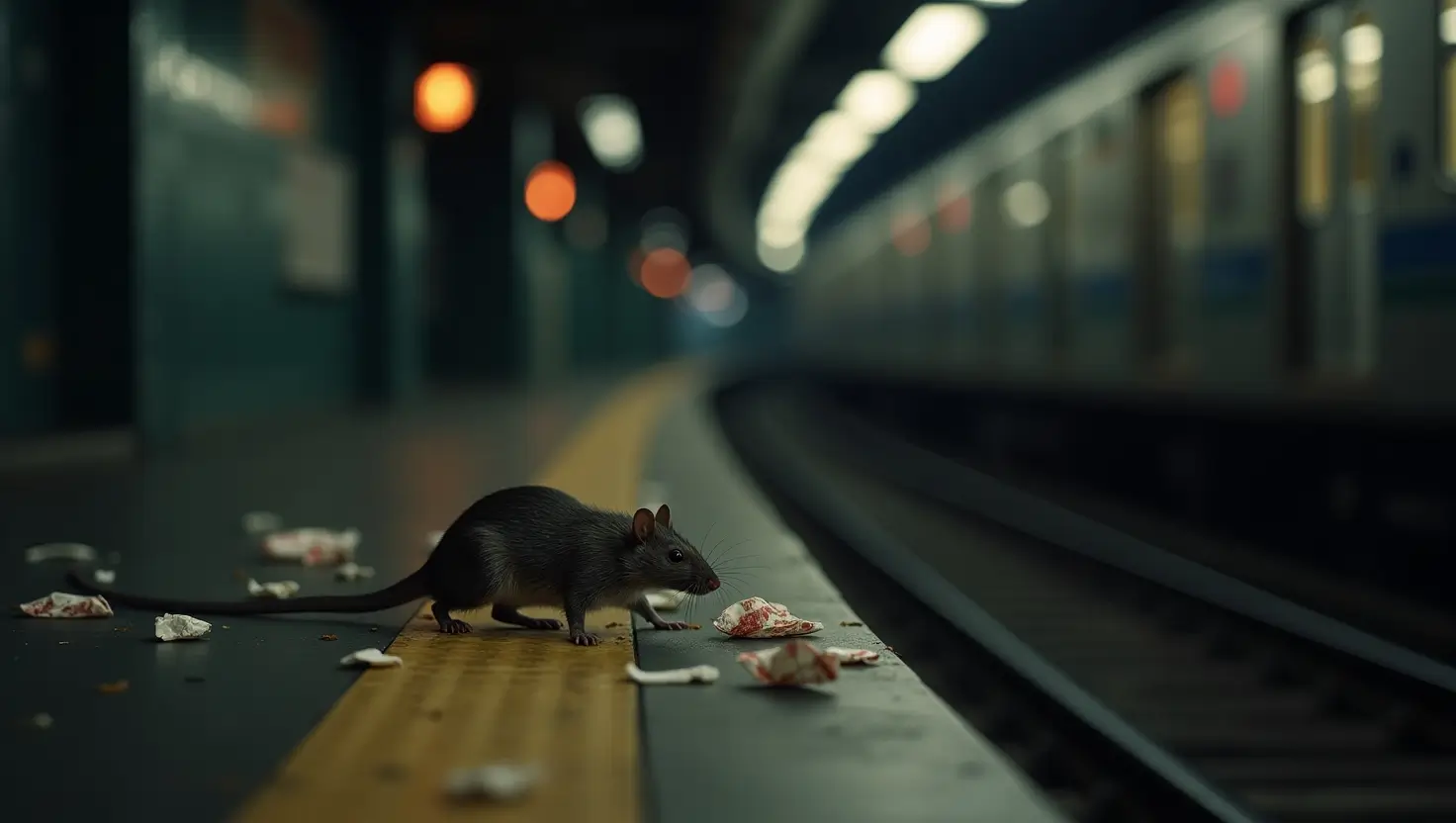Rats on the rails. Mice in the tunnels. If you’ve ridden the TTC lately, you may have noticed that rodents in Toronto’s subway aren’t just an occasional sight—they’re becoming a constant presence.
From food scraps to warm hiding spots, the city’s underground transit system offers everything these pests need to thrive. But what’s really behind the surge in rodent activity—and what can be done about it?
Let’s explore the root causes, health hazards, and smart solutions that are shaping the fight against rodents in Toronto’s public transit system.
Why Subway Systems Are a Paradise for Rodents
Major cities around the world struggle with rodent problems in their transit networks, and Toronto is no exception. But what makes subways such a magnet for infestations?
Urban Infrastructure Meets Ideal Conditions
- Food is everywhere: Whether it’s dropped snacks or overflowing bins, the subway provides rodents with a steady supply of meals.
- Shelter and warmth: Deep tunnels, sealed-off rooms, and maintenance areas stay warm and hidden year-round, perfect for nesting.
- No predators, no pressure: Underground, rats and mice face little threat from predators or harsh weather.
- Freedom to move: Subway lines act like superhighways for rodents, letting them travel long distances undetected.
The Rise of Rodents in Toronto’s Subway System
Toronto’s growing rat problem isn’t just about litter; ongoing construction, aging infrastructure, and high daily ridership all contribute to rising infestations.
Where Are Rodents Most Active?
Some parts of the TTC see more rodent activity than others. Here’s where rats and mice are often spotted:
- Track-level zones: Rodents nest between the rails where visibility is low and foot traffic is minimal.
- Waiting platforms: Late at night or during off-peak hours, food scraps attract rats right where passengers stand.
- Garbage storage and collection areas: A hotspot for feeding and breeding if not cleaned frequently.
- Ventilation shafts and cable tunnels: These hidden corridors allow rodents to move freely from station to station.
Rodents aren’t just surviving—they’re multiplying in exactly the places commuters least expect.

The Hidden Dangers: Why Rodents Are More Than Just Gross
The sight of a rat is unsettling, but the real issues run deeper. Rodents in Toronto’s subway are a health and safety concern that affects riders, staff, and infrastructure alike.
Health Risks
Disease carriers: Rats can spread leptospirosis, salmonella, and other harmful bacteria through urine and droppings.
- Allergic reactions: Rodent dander and waste particles can trigger asthma or allergic responses in sensitive individuals.
System-Wide Impact
- Damage to electrical systems: Rodents often chew through wiring, risking short circuits and fires.
- Service delays and maintenance costs: Gnawing and nesting cause damage that requires urgent and expensive repairs.
- Negative public perception: Rodent sightings harm the TTC’s reputation and decrease rider confidence.
Rodent Control in Toronto’s Subway: What’s Being Done
Addressing the issue requires more than just traps—it takes a coordinated approach between the TTC, the City of Toronto, and pest management professionals.
Inside the TTC’s Strategy
- Scheduled baiting programs: Rodenticides are placed in key areas every few months.
- Focused deep-cleaning: More rigorous cleaning routines reduce attractants.
- Infrastructure upgrades: Sealing entry points and repairing cracks helps prevent access.
City-Wide Support
- Property inspections: Private properties near transit lines are monitored for rodent activity.
- Health enforcement: Restaurants and vendors near stations are subject to pest control regulations.
- Community education: Flyers, digital campaigns, and city workshops inform the public about prevention steps.
While these measures are helpful, long-term success depends on implementing smarter strategies and fostering public cooperation.
A Smarter Approach: Integrated Rodent Control in Toronto
At Excellent Pest Control, we specialize in urban pest management, and we know subway systems require more than traditional methods. That’s why we recommend Integrated Pest Management (IPM): a science-based, environmentally responsible approach that works in the long term.
Our IPM Solutions Include:
- Frequent monitoring to detect early signs of rodent activity
- Sanitation improvements to remove access to food and water
- Exclusion methods like sealing gaps, vents, and structural flaws
- Targeted traps and bait stations to reduce populations strategically
- Education for staff and the public to create long-lasting behavioral change
This approach makes rodent control in Toronto safer, smarter, and more sustainable.
You Can Help Keep Toronto’s Subway Rodent-Free
Controlling rodents is a shared responsibility. Every commuter and business near the TTC can help reduce the problem with a few simple actions:
- Dispose of trash properly and refrain from leaving food behind.
- Avoid feeding birds or squirrels near stations.
- Report rodent sightings to TTC or city officials.
- Keep food service areas clean if you’re a nearby vendor.
A cleaner subway is a safer subway for everyone.
Stop the Spread: Let Excellent Pest Control Help
If you manage a building near a transit hub or you’re worried about rodent activity near your business, Excellent Pest Control is here to help.
With years of experience tackling high-density urban infestations, we provide discreet, professional services that get results—fast.
Serving Toronto, the GTA, and transit-adjacent properties
Free inspections and long-term treatment plans are available
Call today for expert help with rodent control in Toronto




